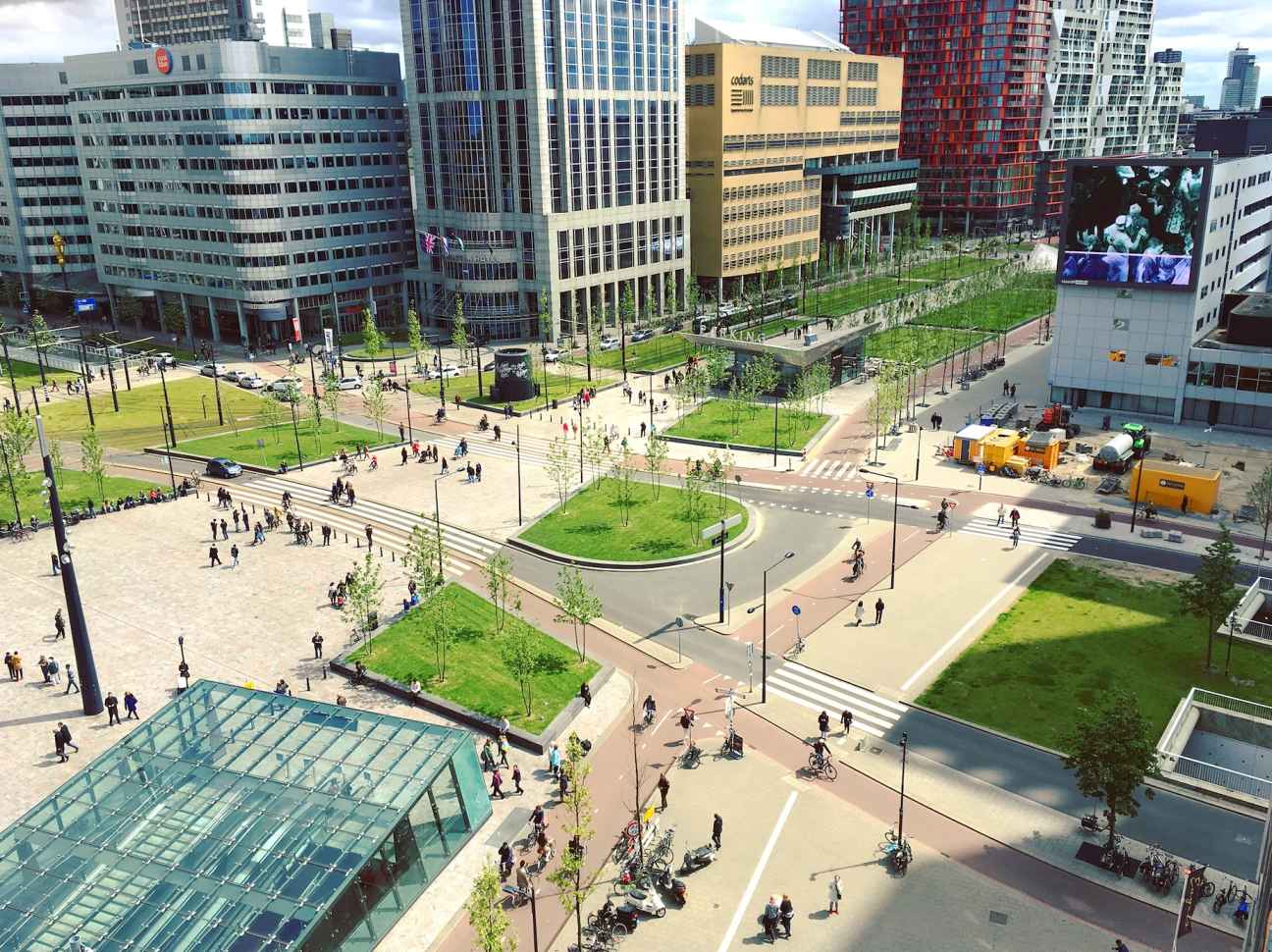Written by Olivier Pairot
With precincts at risk of suffering “transport burnout” the time is now for private sites to reap the benefits of autonomous vehicles.
When it comes to autonomous vehicles, robo-taxis or futuristic images of shiny cars zipping down public highways spring to mind. While this may become reality, they will not come first. Private sites will be the early adopters of autonomous vehicles for two reasons: there is a real need for additional shared intra-site mobility; and from an economic point of view, the only way to address this need is with a fleet of on-demand shared fully autonomous shuttles.
Managers of industrial sites, business parks, campuses or other private, community locations, will be familiar with some of the mobility challenges staff, visitors and residents face:
- “Is there parking?”
- “Can I get there on time?”
- “Do I need to walk all the way in the rain/heat/snow ?”
- “I have a baby in a stroller, which can be tricky. How do I get there?”
- “I am a person with reduced mobility. How will I get around?”
Risk of transport burnout
As a consequence, some precincts are at risk of suffering “transport burnout” with over dependence on private cars and parking. This has many negative consequences. A huge percentage of the available surface is dedicated to parking lots and roads. In large cities, 50% of the public space is occupied by cars and roads. In a business park, this easily climbs to 70%. Furthermore, a lot of traffic within any closed site is difficult to make enjoyable and safe in the best of circumstances. The less vehicles, the better.
A very efficient connection to public transport means outside the site, and organized shared mobility within the site can help solve this issue. It can also be part of a strategic re-design of the space. One single parking lot at the entrance, for example, to limit the number or driving and parked cars on site and optimize intra-site flows.
However, setting up shared mobility within large sites comes today with a very heavy price. In order to offer a service let’s say from 7am to 8pm, 5 days a week, 50 weeks a year, each shuttle will require in most countries 2 full-time drivers per vehicle, which represents up to 80% of the total cost of the service. In addition, drivers are in some countries hard to recruit, and also hard to keep, due to a significant turnover in these positions. This beautiful idea of a private car-free site, can quickly turn into an expensive and little-used service.
Except of course if autonomous vehicles can make this dream come true.
Private sites are ripe for autonomous vehicles
Closed sites are obvious winners for autonomous shuttles: they are easier to map, and nearly all of the possible routes onsite in which driverless solutions can be deployed can be predefined. This offers a very good mastering of the potential missions that can be requested from the vehicle. Having a “map” like this means we can be confident in delivering a safe, driverless experience with no requirement for an onboard supervisor. This is the promise of Level 4 autonomous driving.
Moreover, the type of vehicles, as well as the maximum speed of road users can often be more controlled than on public roads, drastically reducing the number of potential “corner cases”. I.e. Rarer but highly complex situations, that the vehicle has to handle. Autonomous vehicles are mature enough to address these types of sites earlier than public roads.
Unlocking mobility that works
Business parks, university campuses and hospitals are in the lead for Level 4 autonomous transport (fully driverless in a known area) to develop. Many are already starting to re-think traffic within their site. If what they deploy at small-scale works, it can get bigger.
A use case of particular note is at the TLD (a world leader in ground support equipment for airport) factory and business park premise which has been running smoothly since 2018, linking the main factory site to the employee restaurant 1 mile away. It was the first autonomous vehicle deployment in the world without a safety operator on board purely relying upon a “remote supervisor” to monitor the activities of the driverless shuttle inside and outside the vehicle.
Fully autonomous vehicles can also offer a flexibility which is not possible with conventional vehicles. Vehicles can be deployed immediately as demand arises, without having to wait for additional operators to be available/on site. This is in the sights of the Herøya industrial park with their service.
For times when fewer vehicles are required, vehicles can be withdrawn from service without the need to change staff schedules. For example, a large university campus might need shared autonomous transport only during term time.
Tried and tested autonomous shuttles
The most-deployed driverless shuttle in the world, our EZ10 passenger shuttle has tried and tested this having travelled more than 800,000 km with zero collisions in complex environments. That’s the same as travelling around the earth 15 times.
Thanks to its unique hardware and software architecture, the EZ10 reaches an unmatched level of safety in the industry.
EasyMile is also the first autonomous vehicle solutions provider to be ISO 9001:2015 certified and ISO 26262 compliant, recognizing that our solution is safe and reliable for these applications. This is essential for all use cases but particularly so on heavy industrial sites where the range of mixed traffic can be exponential.
Our solutions use electric-powered vehicles that help to avoid noise and air pollution.
With a capacity of 15 passengers they can replace anywhere between 1 and 15 cars on your site. This frees up space for a myriad of other uses and reduces traffic issues when staff and visitors enter and exit your site.
Is a Level 4 driverless mobility solution right for your site?
A fully autonomous driverless solution can offer real value to many private site operators, especially those who handle a significant number of predictable or repeated journeys on their premises.
Those managing industrial or business sites, or those redesigning campuses to optimize their spaces, are best placed to take advantage of Level 4 autonomous transport right now.
Find out more about how we can bring a cost-effective and safe driverless vehicle solution to your site here.
Olivier is EasyMile’s Product and Marketing Director for the EZ10. He orchestrates the solution’s development with passion and technical expertise. A self-described professional problem solver he aligns what matters for customers with what needs to be done today, and tomorrow.


